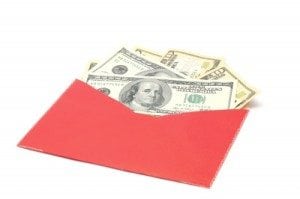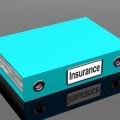If you are old enough, you may remember your grandmother reaching into her cupboard and pulling out an envelope filled with cash, selecting a few bills out of it, and sending you to the store for milk and eggs. That rugged generation, who had no access to credit cards, had to rely on their own wits to keep purchasing power strong.
What they came up with has never been improved upon.
Not only was it simple, it was exceedingly effective. For those who have not seen the “envelope system,” or the wonders it can do for your finances, let me explain how it works. By adopting this simple technique, you will reclaim financial control of your life.
How the Envelope Budgeting System Works
First, let’s look at how the envelope system works when using cash. Each week or month or six months or even years, certain financial obligations must be met:
-
Groceries are a weekly purchase —
-
Electric bills a monthly expense —
-
Car insurance a semi-annual event —
-
Vacation a yearly occurrence —
While each of these expenditures occurs at different time periods, income generally is regularly occurring. Trouble usually comes when you fail to keep this big picture in mind and begin to live on the flow of cash from your paycheck. The envelope system prevents this by keeping the big picture always at the forefront of decision making.
Let’s look at an example. Perhaps you have a $1000/week net income. If your grocery bill is a modest $75/week and commuting cost $50, you will have an $875 surplus during that pay period. The temptation then is to use that surplus for pleasure purchases that are by no means necessary.
But the following pay period, your expenses may include the electric bill, phone bill, other utilities, a car repair and an insurance payment. Suddenly your earnings, which had been so adequate two weeks ago, are woefully insufficient. If an envelope system had been in place, this disaster would have been entirely avoided.
Safeguarding your Cash Flow
To prevent this from happening again, you must take inventory of all your expenditures and the timing of each one. Identify them as weekly, monthly, quarterly, semi-annually, yearly, or multiplicity of years (such as saving up to buy a new car).
Once you have done that, decide how much money from each paycheck you will have to dedicate to each of those bills. For instance, if your electric bill is $100 each month, you will have to take $50 from each paycheck and place it in the envelope marked “electric”. If your car insurance is $800 every six months, you will have put $67 into the envelope marked car insurance. A $2000 vacation will require an $83 contribution from each paycheck.
The concept is simple, but don’t be deceived by its simplicity. This little system prevents you from fooling yourself into thinking the money in your paycheck is available for discretionary spending when it is not.
What if I don’t want to carry cash?
Even though this method is easy, for some, relying totally on cash is daunting. Admittedly, there are some drawbacks to having thousands of dollars stashed away in your home or carrying large amounts of cash in your wallet. The great thing about this arrangement is that it lends itself easily to virtual record keeping.
For example, perhaps you prefer to deposit your entire paycheck into your checking account. You can still have your “envelopes.” Simply create virtual accounts on paper and transfer the necessary amounts by simply using a pen and notebook.
Simply write down how much money is going into and out of each account. Then, when you look at your checking account and see $2000 in there, you will know that it is already earmarked for expenditure and not available for use today.
How many envelopes?
Even if you are sold on this system, some people have trouble knowing how many envelopes to create. There is no right or wrong answer, and of course you do not have to categorize all of your spending. One strategy is to simply create categories for long range goals such as semi-annual insurance bills, vacations and Christmas.
If you are otherwise disciplined in your spending, this will work well. On the other hand, if you are the type of person who sees it and spends it, or if this type of planning for future expenses is a completely new concept, more categories will be beneficial. In that case, you will dedicate money to all the monthly utilities as well as groceries, commuting, dining out, spending money and clothing as well as the annual and semi-annual expenses.
Giving it a Try
Don’t be discouraged if you are not able to keep this system with great precision. If you end up with an emergency, such as a broken hot water heater, and you rob the insurance fund to pay for a new one, chances are you will still have part of that fund left when the insurance is due. Having to come up with $300 for that payment may be rough, but not as rough as coming up with the full $800.
Give this method a try. Your system won’t look like the one your grandparents used, but it will be just as effective. It is hard to believe that such a little technique can yield such incredible results, but sometimes the best fixes are the simplest.
~~~~~~~
written by: Omar Maxwell
~~~~~~~
Image courtesy of Vichaya Kiatying-Angsulee FreeDigitalPhotos.net




